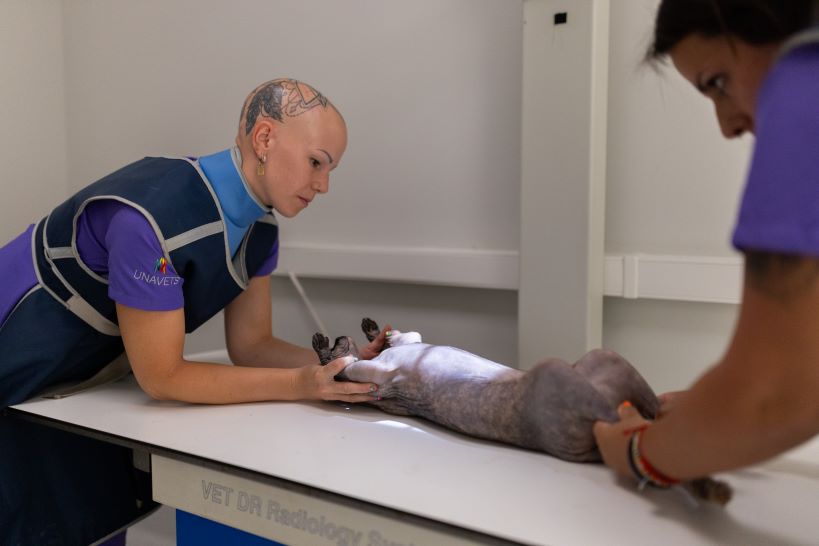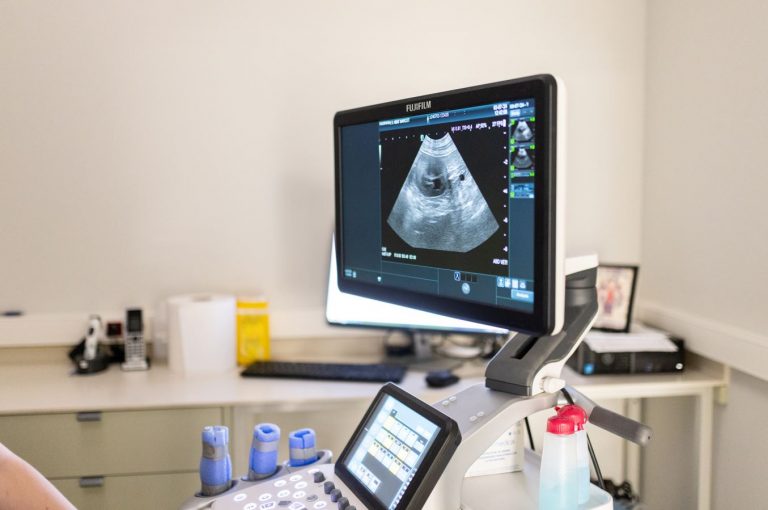Why Diagnostic Tests Are Important For Your Pet
When your dog or cat has a health problem, our veterinarians at Abat Marcet Veterinary Hospital use a variety of techniques to get to the source of the issue.
Changes in body temperature, weight, appetite and energy level can signal a problem that requires further investigation. Sensitive areas of the body or the animal’s reluctance to put weight on their limbs may signal an issue that is not visible on the surface. In these cases, a veterinarian may advise one or more of a variety of tests that can provide information about what’s going on inside your pet’s body.
In some cases, you may not even suspect your pet has a problem, but a test will reveal a health issue in the early stages so that it can be treated before it becomes a more critical health problem.

Multidisciplinary Collaboration
Our imaging specialists work closely with internal medicine, surgery, and emergency teams to expedite diagnosis and the start of treatment.
Advantages for the patient:
-
Safe and minimally invasive tests.
-
Fast and reliable results.
-
The possibility of advanced studies through external collaboration.
Common Veterinary Diagnostic Tests
Abat Marcet Veterinary Hospital offers diagnostic imaging tests such as:
- Digital X-ray: This generates clearer images than traditional X-ray machines, with less radiation and shorter exposure, which means better speed and quality. It allows the X-ray to be viewed on a computer instantly and included on various digital media.
- Abdominal and Thoracic Ultrasound: This allows us to see lesions in organs and other disorders. Ultrasound does not use ionising radiation, which makes it safe for monitoring pregnancies and for frequent examinations.
- Echocardiography: This is an imaging technique that uses ultrasound to see the heart in real-time motion. It allows us to evaluate the shape, size, strength of the heart muscle contraction, and the function of the valves. It’s a key tool for diagnosing heart diseases as it’s non-invasive, doesn’t require sedation in most cases, and doesn’t emit radiation.
- Digestive and Respiratory Endoscopy: This is used to view the inside of the body’s organs and cavities. It’s useful for diagnosing digestive problems, bleeding, inflammation, ulcers, or detecting abnormalities.
- CT Scan (Computed Tomography): This is a diagnostic imaging test that uses X-rays to create detailed cross-sectional images of organs, bones, soft tissues, and blood vessels inside the body. Unlike a conventional X-ray, which produces a two-dimensional image, a CT scan takes multiple images from different angles and then combines them to generate high-resolution, three-dimensional images.
These tests are important tools that can help your vet keep your pets healthy throughout their lives.



